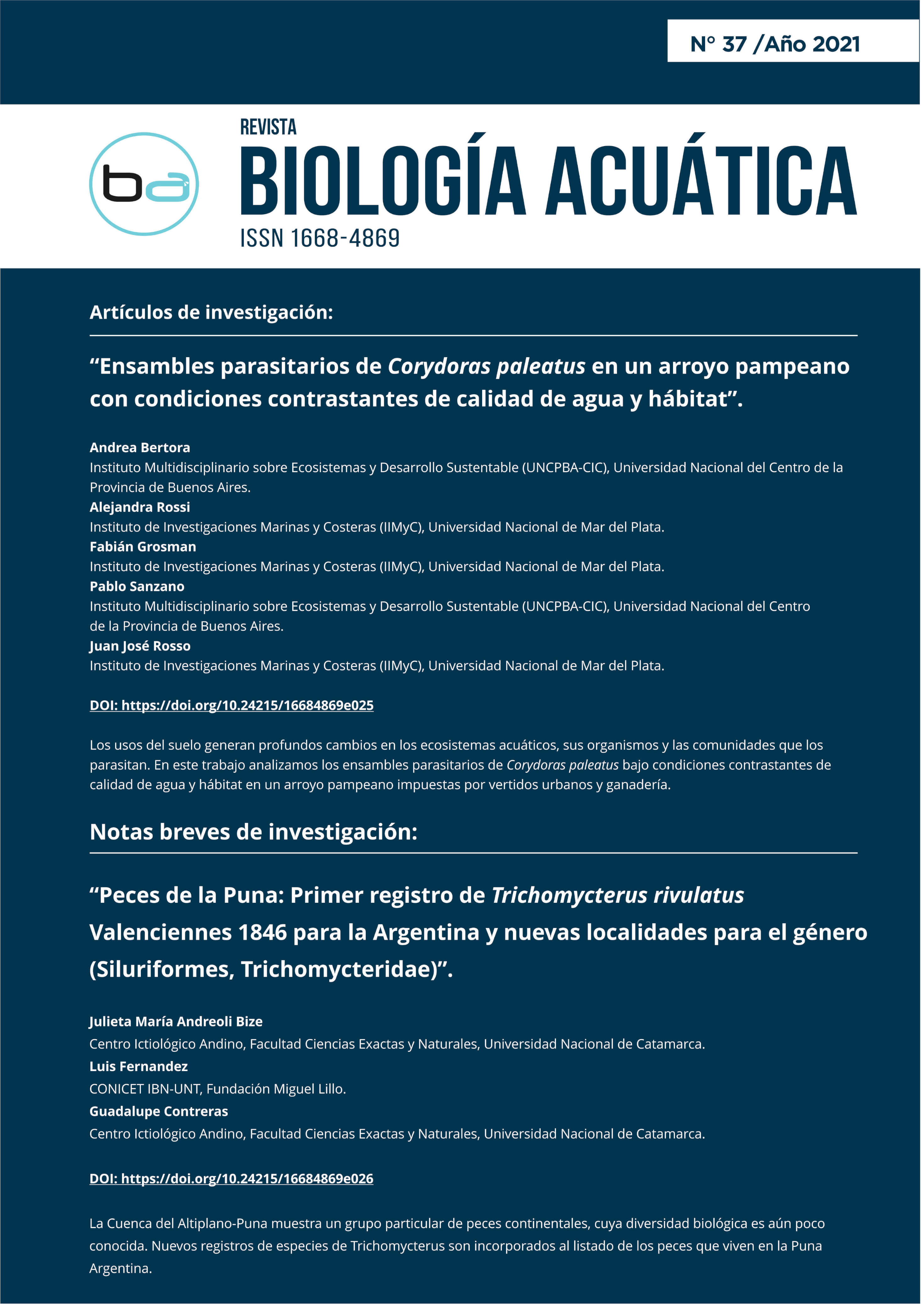Parasite assemblages of Corydoras paleatus in a Pampa Plain stream with contrasting conditions of water quality and habitat
DOI:
https://doi.org/10.24215/16684869e025Keywords:
Ecological integrity, fish, livestock, parasites, urbanizationAbstract
Land uses generate deep changes in aquatic ecosystems, their organisms and the communities that parasitize them. In this study we analyze the parasite assemblages of Corydoras paleatus under contrasting conditions of water quality and habitat of a Pampa Plain stream imposed by urban discharges and livestock. The possible effects of these aspects on some attributes of the parasite communities of C. paleatus are discussed. A total of 136 parasites belonging to four taxonomic groups were identified: Phylocorydoras platensis (monogeneans), Heterophyidae (larval digeneans), Protocephalidea (larval cestodes) and ciliates protozoa (Trichodinidae gen. sp. and Ichthyophthirius cf. multifiliis). Under conditions of urban impact, less richness and diversity were recorded. Instead, the livestock reach showed larger parasite richness, diversity and equitability, and the presence of monogeneans (P. platensis) and ciliates (Trichodinidae gen. sp.). The digenean populations registered the highest abundance and the populations of cestodes and I. cf. multifiliis were more prevalent. The deterioration of water quality and instream habitat of the reach close to the city could explain the impoverishment of parasite communities. A better water quality with input of organic substrate, slower flow and larger macrophytes development observed under the influence of livestock, would improve conditions for establishment of monogeneans and ciliates in gills, digeneans in fins and cestodes in the digestive tube. This study provides a first approach to the knowledge of the parasite ecology of C. paleatus and the factors that could model or influence the structure of the parasite communities of this species.





















